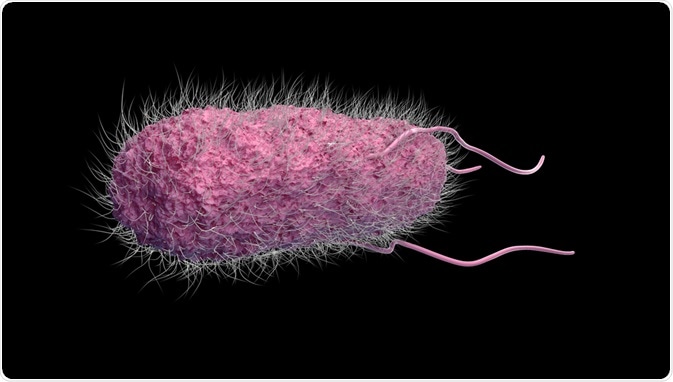Bacterial stress responses boost the survival of bacterium in extreme environmental conditions.
 Image Credit: Urfin / Shutterstock
Image Credit: Urfin / Shutterstock
Through a complex network, bacteria sense adverse conditions and respond to them via transcriptional alterations, allowing them to adapt and survive. Using these responses, they can detect multiple environmental factors simultaneously, and individual stress detection systems can communicate with each other, ensuring that responses are synchronized and effective.
The most important bacterial stress responses include the envelope stress response, the heat shock response, the cold shock response, and the general stress response.
The envelope stress response
Stress can be detected is through a two-component signal transduction (2CST) system. In this system, a histidine kinase within the inner membrane initially autophosphorylates upon the detection of stress, before transferring the phosphate group to a cytoplasmic response regulator.
This response regulator then acts as a transcription factor, altering the gene expression of Cpx proteins which protect the cell against envelope protein misfolding and other damaging cellular processes.
The heat shock response
Heat shock response protects bacteria from high temperatures. Heat shock proteins are transcriptionally upregulated in response to heat which protects the cell against protein denaturation and other damaging cellular processes. For example, in Escherichia coli, the expression of these proteins is controlled by sigma factor-32 (σ-32).
This factor binds to heat-shock promoters and leads to the production of heat shock proteins, including chaperones and proteases. It ensures that proteins are correctly folded, shuttled to the correct areas of the cell, or destroyed following incorrect folding.
The cold shock response
Bacteria in cold environments initially undergo a 5-hour lag phase where they do not grow. Cold shock proteins are transcriptionally upregulated during this lag phase.
Following their production, the growth of the bacterium resumes but at a lower rate. These proteins are therefore thought to aid the growth and survival of bacteria at lower temperatures.
One of the first cold shock proteins identified was CspA, initially discovered in E. coli. This protein binds to single-stranded RNA, aiding transcription and translation. Further roles of cold shock proteins include condensation of the chromosome, the organization of the nucleoid, and enhancing the survival of bacteria within very cold environments.
The general stress response
In addition to the previously described responses, bacterium (such as E. coli) also have a general stress response mediated by regulator sigma38 (σ-38). As the level of stress increases, so do the levels of σ-38, and its accumulation results in the transcription of protective genes. Osmotic stress, cold stress, acid shock, nutritional stress, stationary phase, and temperature sock are some of the stresses that activate this response.
Virulence of bacteria and stress responses
In addition to boosting the survival of bacteria, these stress responses also enhance their virulence. To successfully move from the external environment into a host and colonize, the bacteria must be able to detect and respond to large environmental changes. F
or example, heat-shock regulation in Campylobacter jejuni (C. jejuni) is essential to colonize the intestine. Furthermore, some heat shock proteins can increase the virulence of bacteria by increasing their virulence or resistance to the host’s immune system.
Further Reading
Last Updated: Oct 22, 2018